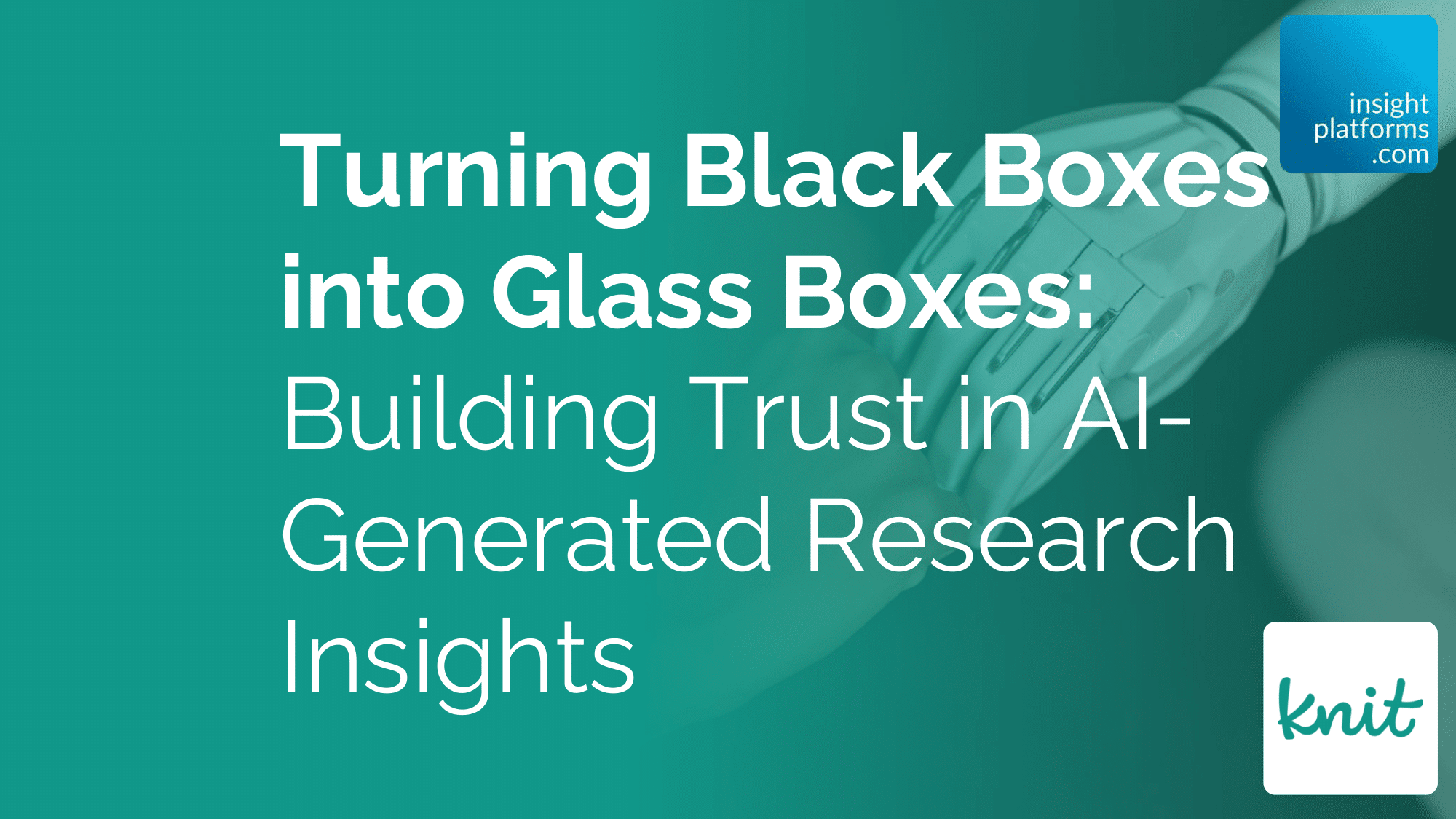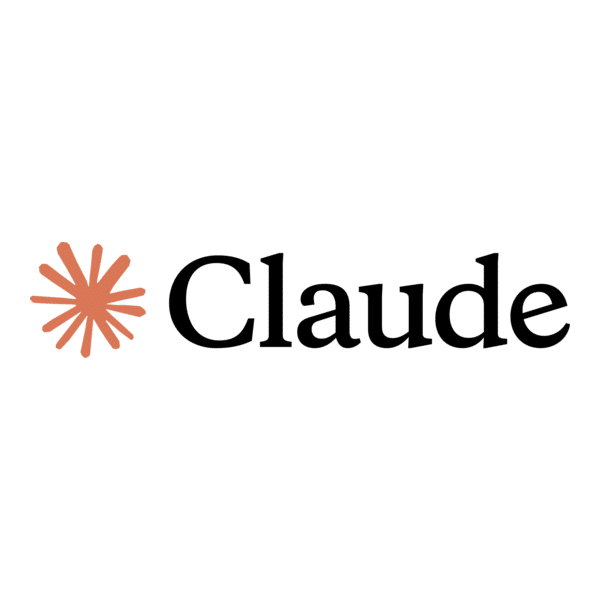
Turning Black Boxes into Glass Boxes: Building Trust in AI-Generated Research Insights
By Knit
- article
- Agile Qualitative Research
- AI
- Artificial Intelligence
- Brand Research
- Concept Testing
- DIY Surveys
- End-to-End Survey Platforms
- Innovation Research
- Qual-Quant Hybrid
- Video Analytics
- Video Research
- Voice of Customer Surveys
As artificial intelligence becomes increasingly integrated into market research workflows, organisations face a critical challenge: understanding how AI arrives at its conclusions. This opacity – often referred to as the “black box” problem – presents significant barriers to adoption and trust, even as AI promises faster, more efficient research processes.
The consequences of this opacity extend beyond simple scepticism. When researchers cannot explain how AI generated a particular insight, they struggle to validate findings, defend recommendations to stakeholders, and maintain the rigorous standards that define quality research. For an industry built on evidence and methodology, the inability to see inside the analytical process represents more than an inconvenience – it threatens the fundamental credibility of AI-assisted research.
This article is based on the presentation “Black Boxes, Fraud Farms, and the Last Mile: What’s Holding Us Back and How to Fix it”, presented by Knit at the Insights to Action Summit in October 2025. The full video replay is free to watch here:
Black Boxes, Fraud Farms, and the Last Mile: What’s Holding Us Back — and How to Fix It
Understanding the Black Box Problem
The black box problem manifests when AI systems process data and produce insights without revealing their reasoning. A researcher using traditional methods can walk stakeholders through each analytical step: how segments were defined, which statistical tests were applied, and why certain themes emerged. With many AI tools, this transparency disappears. The system ingests data and outputs conclusions, leaving researchers unable to explain the path between the two.
This creates multiple challenges. First, researchers cannot effectively pressure-test AI-generated insights. Without understanding the reasoning, they cannot identify potential biases, logical gaps, or contextual misinterpretations. Second, stakeholders accustomed to rigorous methodology may dismiss AI-generated findings as insufficiently grounded. Third, regulatory and compliance requirements across many industries demand full traceability of analytical processes – a requirement that black box systems cannot meet.
Consider a researcher analysing open-ended survey responses about product satisfaction. An AI tool might identify “quality concerns” as a key theme, but without visibility into how that conclusion was reached, the researcher cannot determine whether the AI appropriately distinguished between manufacturing defects, design issues, and perception problems. The insight may be correct, but its value diminishes without the ability to verify and refine it.
Practical Strategies for Transparency
Fortunately, the black box problem is solvable. Forward-thinking organisations and technology providers are implementing several approaches to build transparency into AI-assisted research workflows.
Request and Document AI Reasoning
Most modern AI systems, including widely available tools like ChatGPT, can explain their reasoning when asked. Researchers should make this a standard practice: after receiving AI-generated insights, request a step-by-step explanation of how the system arrived at its conclusions. This explanation serves multiple purposes. It allows researchers to validate the logic, identify potential issues, and understand whether the AI considered relevant contextual factors.
Some organisations are taking this a step further by incorporating AI reasoning into their final deliverables. By including high-level summaries of the AI’s analytical approach as footnotes in presentations and reports, researchers provide stakeholders with the transparency needed to trust the findings. This practice also sets appropriate expectations about AI’s role – positioning it as a powerful analytical tool that enhances rather than replaces human expertise.
Implement Source Citations and Traceability
Transparency requires the ability to trace insights back to their source data. Advanced AI research platforms now include citation functionality that links every insight to specific respondent data. When AI identifies a pattern or theme, researchers can click through to see exactly which respondents contributed to that finding and which portions of their responses were considered relevant.
This traceability serves several functions. It allows researchers to validate that insights genuinely reflect the data rather than AI hallucinations or misinterpretations. It enables deeper exploration – when an insight seems significant, researchers can examine the underlying data to develop a richer understanding. It also facilitates quality control by revealing when AI draws conclusions from insufficient or unrepresentative data.
Enable Direct Intervention and Adjustment
True transparency extends beyond visibility into the ability to intervene. The most effective AI research platforms allow researchers to examine the AI’s analytical approach and then modify it directly. If the AI segments data in a way that misses important nuances, researchers should be able to adjust those segmentation criteria. If the analysis overlooks a key variable, researchers should be able to incorporate it.
This approach transforms AI from a black box into a collaborative tool. The AI provides initial analytical frameworks and identifies patterns, but researchers retain full control over the process. This combination leverages AI’s processing power while preserving the contextual understanding and business acumen that human researchers bring.
Building Organisational Standards
Beyond individual tool selection, organisations should establish standards for AI transparency in research. These might include requirements that all AI-assisted projects document the AI’s role and reasoning, that researchers validate AI insights against source data before presenting findings, and that procurement processes prioritise tools that offer explainability and traceability.
Training also plays a crucial role. Researchers need skills in working with AI systems, including the ability to critically evaluate AI reasoning, identify common failure modes, and effectively combine AI capabilities with human judgment. Organisations that invest in developing these competencies position themselves to extract maximum value from AI while maintaining research quality.
The Path Forward
The black box problem is not an inherent limitation of AI in market research, it is a design choice. As the industry matures in its AI adoption, transparency is becoming a differentiating factor among tools and platforms. Organisations that prioritise explainability, traceability, and human oversight are building AI systems that enhance rather than undermine research credibility.
For research leaders evaluating AI tools, transparency should be a primary selection criterion. Ask vendors to demonstrate how their systems explain reasoning, trace insights to source data, and allow researcher intervention. Implement processes that validate AI insights before they reach stakeholders. And invest in building your team’s capability to work effectively with AI while maintaining the methodological rigour that defines quality research.
The goal is not to eliminate AI’s role in research but to transform black boxes into glass boxes – systems that augment human expertise with transparent, verifiable, and trustworthy analytical capabilities. Organisations that achieve this balance will realise AI’s efficiency benefits while preserving the credibility and depth that stakeholders expect from professional research.
This article is based on the presentation “Black Boxes, Fraud Farms, and the Last Mile: What’s Holding Us Back and How to Fix it”, presented by Knit at the Insights to Action Summit in October 2025. The full video replay is free to watch here:







